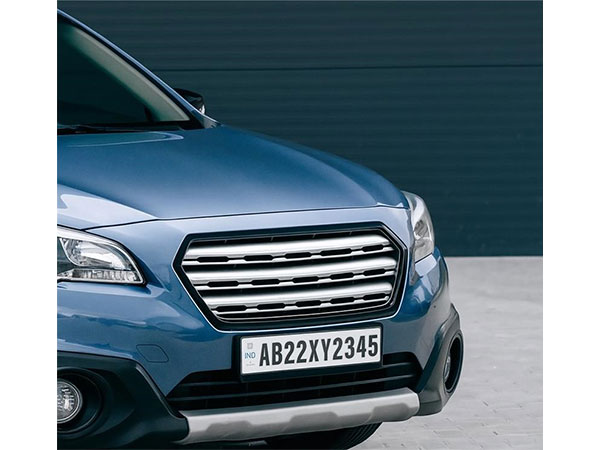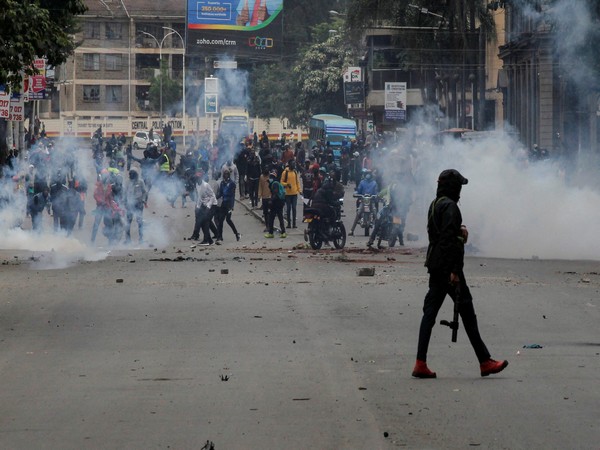
HSRP vs Normal Number Plate: Why Upgrading Isn't Just a Choice - It's a Legal Necessity
Jul 08, 2025
VMPL
New Delhi [India], July 8: When was the last time you paid attention to your vehicle's number plate? For most of us, it's just a legal formality - something the car/bike came with, never to be thought about again. As regulations tighten and enforcement ramps up across India, the vehicle number plate is no longer just a routine accessory - it has become a crucial element of legal compliance and road safety. What was once a basic identifier is now central to how vehicles are tracked, verified, and protected against theft or misuse.
With the Indian government mandating the use of High-Security Registration Plates (HSRPs), many vehicle owners are still wondering what the real difference is between a regular number plate and an HSRP - and whether they really need to make the switch.
So, what exactly sets HSRPs apart from regular number plates? Is it just about looks, or is there something more at stake?
What Is an HSRP?
A High-Security Registration Plate (HSRP) is a tamper-resistant aluminium plate embedded with advanced security features. It is governed by Rule 50 of the Central Motor Vehicles Rules (CMVR), 1989 and is enforced nationally through the Ministry of Road Transport and Highways (MoRTH), which was first introduce in 2001.
Unlike traditional plates, HSRPs are built to enhance vehicle traceability, prevent tampering, and standardise registration across India. All HSRPs are linked to VAHAN database, ensuring centralised control and tracking.
Key Features of HSRPs:
- Tamper-proof Snap Locks: Once fixed, HSRPs can't be removed without destroying them, preventing theft or illegal plate swapping.
- Laser-Etched Unique Code: Each HSRP has a 12 digit alphanumeric code that helps law enforcement trace the vehicle.
- Chromium-Based Hologram: A hot-stamped Ashoka Chakra hologram prevents duplication and fakes.
- Reflective Sheet: Enhances night visibility, reducing accidents.
- Third Registration Mark/Third Licence Plate Sticker: It indicate the fuel type - blue for petrol, orange for diesel, green for electric, etc. It displays key registration details and serves as an additional layer of verification and security, containing the same 12-digit laser-etched alphanumeric code found on the vehicle's High-Security Registration Plate (HSRP) to ensure consistency and prevent tampering.
What Is a Normal Vehicle Number Plate?
Before the introduction of HSRPs, vehicle owners got their number plates made from local vendors. These traditional number plates vary widely in format, font, size, and material.
Key Characteristics of Normal Plates:
* Usually made of painted metal or plastic.
* No security features like holograms or snap locks.
* Can be easily duplicated or tampered with.
* Lacks any centralised traceability or digital registration.
While they may still be visible on older vehicles, these plates are gradually being phased out due to obvious security and standardisation issues.
HSRP vs Normal Number Plate: Feature Comparison
HSRPs aren't just a visual upgrade - they come with government-mandated features designed to enhance security, improve traceability, and standardise vehicle registration. Here's how HSRPs compare to regular number plates:
* Approval & Legality:
- HSRPs are mandated by the Indian government and must be installed on all vehicles sold after April 1, 2019.
- Normal plates are not government-approved and are now illegal for newly registered vehicles.
* Security Features:
- HSRPs come with tamper-proof snap locks, a unique laser-etched 12-digit code, and a chromium-based Ashoka Chakra hologram.
- Normal number plates have no security features and can be easily tampered with or duplicated.
* Fuel Type Identification:
- HSRPs include a third registration mark -- a colour-coded sticker that indicates the fuel type (e.g., blue for petrol, orange for diesel, green for electric).
- Regular plates have no such identification.
* Traceability & Data Linking:
- HSRPs are digitally linked to the VAHAN database, allowing law enforcement to trace vehicles easily.
- Normal plates lack digital traceability and centralised records.
* Night Visibility:
- HSRPs use reflective sheets that improve visibility in low-light conditions.
- Traditional plates are often non-reflective and harder to read at night.
* Theft Protection:
- HSRPs reduce the risk of vehicle identity fraud due to their secure and traceable features.
- Regular plates are easier to swap or duplicate, increasing theft risk.
* Format Standardisation:
- HSRPs follow a standardised format across all Indian states.
- Normal plates vary in design, font, and size, depending on the vendor.
* Issuance & Installation:
- HSRPs are issued only by authorised vendors approved by MoRTH and installed at designated centres.
- Normal plates can be made by any local vendor, often without verification or control.
* Compliance Risk:
- Using HSRPs ensures full legal compliance and avoids fines or vehicle seizure.
- Continuing with an old number plate, especially after the mandate, can lead to penalties and enforcement action.
Why HSRP is Mandatory?
The push for HSRPs stems from a mix of legal, safety, and administrative reasons. As per rule 50 of CMVR under the Motor Vehicle Act 1988, HSRPs have been mandatory for all vehicles sold after April 1, 2019, and increasingly required for older vehicles as well - subject to state rules.
Key Reasons for the Mandate:
1. Vehicle Theft Prevention: Tamper-proof locks and traceable codes make it harder for stolen vehicles to be disguised or resold.
2. Law Enforcement Efficiency: Police can scan number plates and trace them to verified databases.
3. Uniformity: Every Indian state now follows the same format, making inter-state registration and enforcement simpler.
4. Data Centralisation: All HSRPs are logged into VAHAN, India's central vehicle database.
5. Issuance Control
HSRPs are issued only through authorized manufacturers and fitted at dealerships or approved centers, eliminating unauthorized plate issuance and reducing fraud.
The mandate has been rolled out in phases since 2019, starting with new vehicles. As of 2024-2025, several states have made it compulsory for all vehicles - new or old.
What Happens If You Don't Switch to an HSRP?
Ignoring the HSRP mandate can come at a cost - literally.
Many state governments have launched enforcement drives where traffic police check number plates and impose fines on non-compliant vehicles.
How to Apply for an HSRP Online?
Applying for a High-Security Registration Plate (HSRP) is now a fully digital and state-regulated process. Only vendors authorised by the Ministry of Road Transport and Highways (MoRTH) are permitted to manufacture and install HSRPs. Vehicle owners are advised to book their HSRP only through these authorised channels to ensure legal compliance, issuance control and proper traceability.
1. For vehicles registered on or after 1st April 2019, visit SIAM's official HSRP portal to find your authorised HSRP vendor. For vehicles registered before 1st April 2019, please visit your respective State RTO's website for HSRP-related instructions and application.
2. Enter vehicle details: registration, chassis, and engine number.
3. Choose a fitment location and time slot.
4. Pay the applicable fee online.
5. Get the plate fitted at the selected centre on your appointment date.
6. Receive confirmation and ensure your HSRP status is updated in the VAHAN database.
If you're looking for a reliable and compliant way to book your High-Security Registration Plate, Shimnit is one of the authorised HSRP vendors recognised by the MoRTH. With a strong presence across multiple states and union territories, Shimnit offers a seamless online booking process, quick turnaround times, and compliance with all national security and quality standards.
Whether you are replacing your existing HSRP or upgrading an old number plate , Shimnit helps you stay legally compliant and secure - without any hassle.
How to Know If Shimnit Is Your HSRP Vendor?
If you're unsure whether Shimnit is your authorised HSRP vendor, you can easily verify it:
Visit - https://www.shimnit.com/know-your-hsrp-vendor/
Common Myths About HSRP
Myth 1: HSRP is only mandatory for new vehicles
Fact: HSRPs are mandatory for all vehicles sold after April 1, 2019. However, many states have extended the rule to include older vehicles as well. If your vehicle was registered before that date, you may still be required to retrofit an HSRP based on state regulations.
Myth 2: I won't get caught without an HSRP
Fact: Think again. Many states use ANPR (Automatic Number Plate Recognition) cameras, e-challan systems, and roadside checks. Non-compliant vehicles can be flagged automatically and fined--even if you're not pulled over.
Myth 3: Any local vendor can install an HSRP
Fact: Only vendors authorised by the Ministry of Road Transport and Highways (MoRTH) can issue and install HSRPs. Plates from unauthorised sources are considered invalid and could attract penalties.
Myth 4: If I lose my HSRP, I'll have to re-register my vehicle
Fact: That's not the case. If your High-Security Registration Plate (HSRP) is lost, stolen, or damaged, you don't need to re-register your vehicle. Instead, you can simply apply for a replacement plate through your authorised vendor. Once your request is approved, proceed with the payment for your replacement order and book a fitment appointment. Replacing a damaged or missing HSRP promptly helps you avoid penalties and ensures continued compliance with MoRTH regulations.
(ADVERTORIAL DISCLAIMER: The above press release has been provided by VMPL. ANI will not be responsible in any way for the content of the same)









